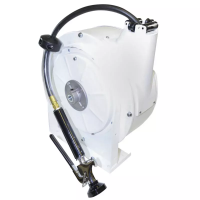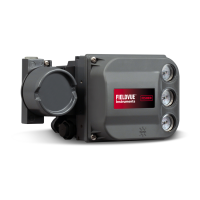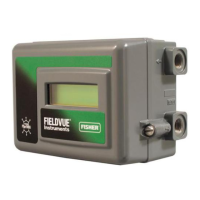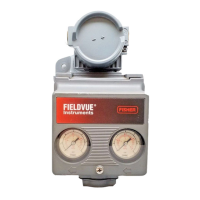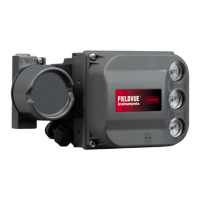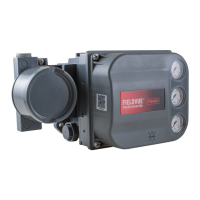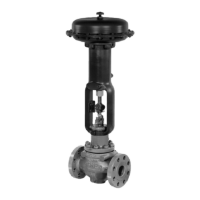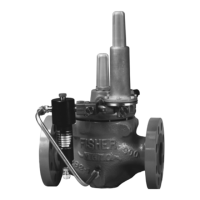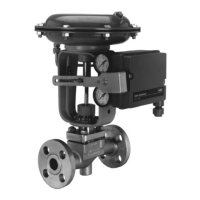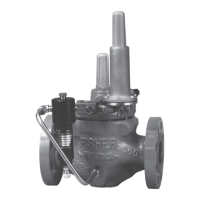Instruction Manual
D102748X012
Configuration
October 2014
47
D Date— Date is a user‐defined variable that provides a place to save the date of the last revision of configuration or
calibration information. It has no impact on the operation of the controller or Field Communicator. Enter a date
with the format MM/DD/YY.
D Descriptor— The Descriptor provides a longer user‐defined electronic label to assist with more specific controller
identification that is available with the HART tag. The descriptor may be up to 16 characters long and has no impact
on the operation of the controller or HART‐based communicator.
D Message— Message provides the most specific user‐defined means for identifying individual controllers in
multi‐controller environments. it allows for 32 characters of information and is stored with the other configuration
data. Message has no impact on the operation of the controller or the Field Communicator.
D Polling Address— If the digital level controller is used in a point‐to‐point configuration, the Polling Address is 0.
When several devices are connected in the same loop, each device must be assigned a unique polling address. The
Polling Address may be set to a value between 0 and 15.
For the Field Communicator to be able to communicate with a device whose polling address is not 0, it must be
configured to automatically search for all or specific connected devices.
D Serial Numbers— Follow the prompts on the Field Communicator display to enter or view the following serial
numbers.
Instrument Serial Number— Use this field to enter or view the serial number on the instrument nameplate, up to
12 characters.
Sensor Serial Number— Use this field to enter or view the sensor serial number. The sensor serial number is found
on the sensor nameplate.
Final Assembly Number— A number that can be used to identify the instrument and sensor combination.
Instrument Display
Field Communicator Configure > Manual Setup > Instrument Display (2-2-5)
Follow the prompts on the Field Communicator display to view or edit what is visible in the instrument display.
D LCD Configuration— Select this parameter to indicate if the meter is installed. If the meter is physically installed,
select Installed. The meter must be installed before you can set the display type or the decimal places.
D Display Mode—Only visible if the meter is installed.
Change Display Mode— Select the type of information the meter should display and how it should be displayed by
selecting 'Change display mode'. You can select for display:
PV— Displays the process variable (level, interface, or density) in engineering units.
PV/Process Temperature— Alternately displays the process variable in engineering units, the process temperature
in the units selected under Temp Units (PV Setup), and the degrees of torque tube rotation.
% Range— Displays the process variable as a percent of span (determined by the LRV and URV).
PV/% Range— Alternately displays the process variable in engineering units and the process variable in percent of
span.
D Decimal Places—Selects the number of decimal places to display, up to four. Setting the value to zero puts the
display in auto‐scale mode. It will then display as may decimals places as will fit.
